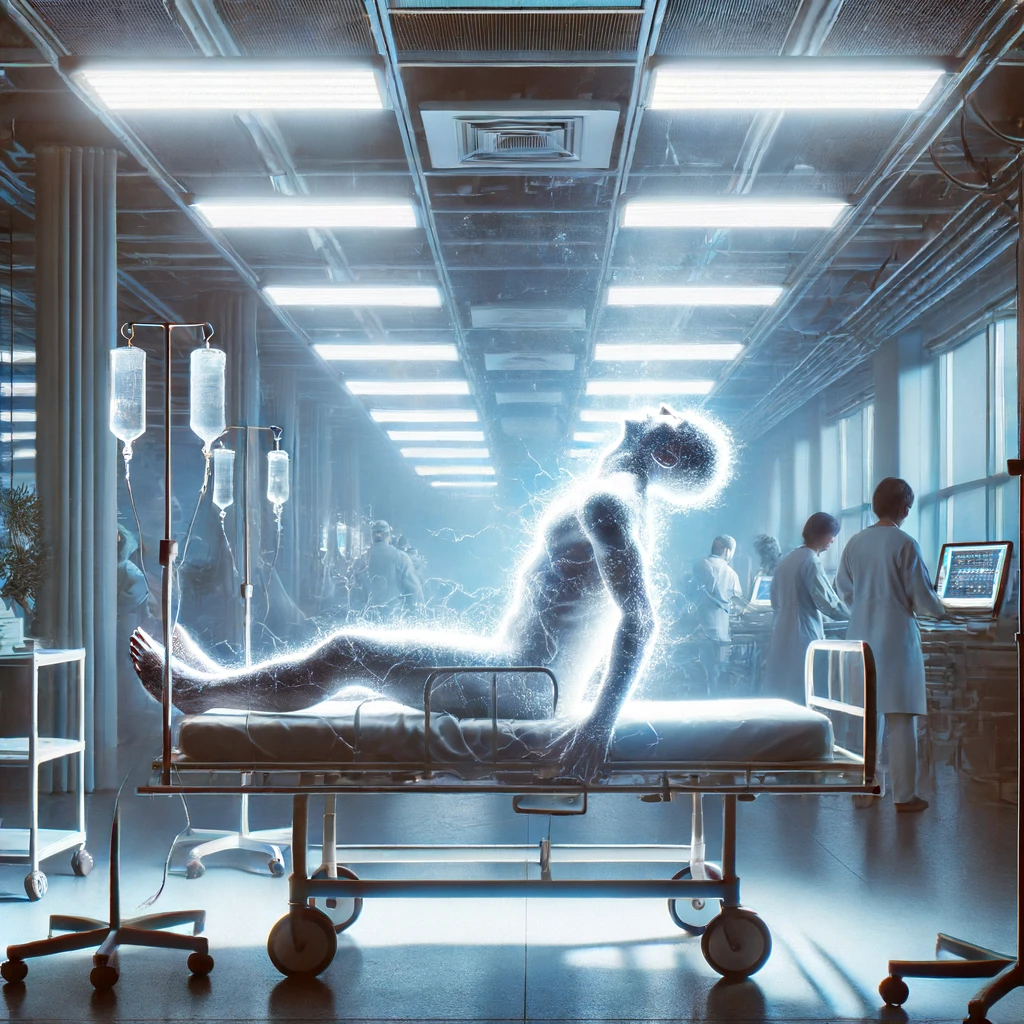Pseudo-Epilepsy

John A. Keel’s exploration into the phenomenon he termed “pseudo-epilepsy” looks into the intersection of neurology and the paranormal, particularly focusing on the experiences of individuals who report contact with unidentified flying objects (UFOs) and beings. This intriguing topic is encapsulated in his article “Pseudo-Epilepsy,” which first appeared in his privately distributed newsletter “Anomaly” in October 1970. The article has since been cited and referenced across multiple platforms, reflecting its significance within Keel’s extensive body of work on unexplained phenomena.
John Keel’s contributions to ufology are vast, and his investigations often venture into the realms where conventional science meets the unexplained. “Pseudo-Epilepsy” is a testament to his unique approach to studying the effects of UFO encounters on human neurology. The original article describes a series of involuntary, unconscious convulsive seizures experienced by contactees—individuals who claim to have had direct encounters with UFOs or extraterrestrials. These seizures often result in muscular soreness and migraines that can persist for weeks after the initial experience.
Keel’s article outlines various case studies to illustrate these phenomena. One notable case involved a 12-year-old girl from Forest Hills, New York, who experienced hallucinosis and mental blackouts triggered by fluorescent lighting. The girl reported seeing and conversing with beings resembling Indians, both at home and in school, where fluorescent lighting was prevalent. Her mother also occasionally saw these apparitions, though she described them as diminutive. Following extensive medical and psychiatric examinations, doctors concluded that the girl’s brain was “tuned” to the same wavelength as fluorescent lights, causing their radiation to interfere with her mental processes. After the family moved and the girl avoided rooms with fluorescent illumination, her seizures diminished significantly.
Another significant case highlighted in the article occurred in Cherry Hill, New Jersey, in 1966. A healthy young Karate instructor, with no history of convulsive seizures, suddenly collapsed. During his transport back from the hospital, he and three others witnessed a gigantic object hovering above an RCA factory in Cherry Hill. This case, like many others investigated by Keel, involved witnesses who later complained of muscular soreness and recalled being transfixed or paralyzed, often with no memory of a period of unconsciousness—a phenomenon known as a time lapse effect. Careful interrogation revealed that these individuals experienced mental blackouts ranging from a few seconds to several hours.
Keel’s investigations suggest that these seizures and associated phenomena might be linked to electromagnetic waves affecting specific brain areas, inducing hallucinations and other sensory impressions. He postulates that the same electromagnetic influence generating some psychic-type apparitions also produces most UFO contactee experiences. This theory is supported by the fact that the brain sections producing classic UFO/psychic effects also control visual and audio perception. Keel further explores the idea that images, sounds, and other sensory impressions could be introduced into the brain by an electromagnetic wave bypassing normal sensory channels. An overcharge of this electromagnetic wave could produce a dilatory effect, potentially leading to cellular breakdown, as he speculates might have been the case in the death by brain tumor of British contactee Arthur Bryant.
The article also notes that percipients in religious miracles and visions traditionally suffer from similar pseudo-epileptic effects. The trance state followed by muscular soreness and other symptoms is common across different frames of reference, from mystical illuminations and cosmic consciousness to more destructive variations seen in cases of demonopathy. Keel points out that schizophrenia can often be induced in some percipients, with various chemical and emotional problems potentially responsible for some cases.
Keel’s work on pseudo-epilepsy has been reprinted and discussed in several platforms, underscoring its relevance. It is listed in a comprehensive bibliography of his works on his official website and was reprinted in Strange Magazine, issue #4, in 1989. This recognition confirms that the article is a critical part of Keel’s extensive investigations into the neurological effects experienced by those reporting UFO encounters.
In his pursuit of understanding these phenomena, Keel encourages a comparative approach, suggesting that researchers should study available medical literature alongside known UFO effects. He cites the Flying Saucer Review, which discussed an intriguing event in Finland where two young men suffered classic medical effects, including actinic ray burns, after a UFO sighting. Keel laments that thorough medical examinations and investigations into such cases have been rare, with few researchers making efforts to study the available medical literature in detail. He believes that such comparisons could be highly fruitful in understanding the connections between electromagnetic influences, neurological effects, and paranormal experiences.
Keel’s insights into pseudo-epilepsy offer a unique perspective on the neurological implications of UFO encounters. His work bridges the gap between conventional science and the paranormal, providing a framework for understanding the complex and often bewildering experiences reported by contactees. By exploring the effects of electromagnetic waves on the brain and their potential to induce hallucinations and seizures, Keel opens a path for further research into the interplay between neurology and unexplained phenomena.


